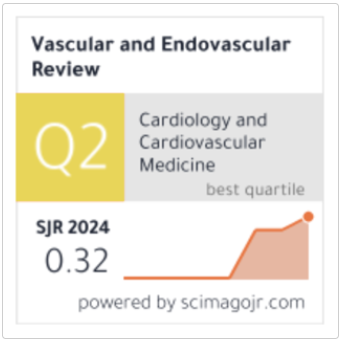Role of C -reactive protein as an inflammatory marker in STEMI prognosis in patients receiving thrombolytic (a single center cohort study)
Keywords:
prognostic biomarker, C -reactive protein, inflammatory biomarkers, canonical inflammatory mediator, STEMI prognosis, thrombolytic therapy.Abstract
Background: Proper prognostic biomarker is of a great importance for clinical decision-making in patients with acute myocardial infarction undergoing thrombolytic during admission. Although a lot of significant inflammatory biomarkers have emerged recently, the inflammatory mediator C-reactive protein still plays an important role in predicting adverse post-infarction complications.
Aims: to evaluate the role of C -reactive protein as an inflammatory marker in STEMI prognosis in patients receiving thrombolytic therapy
Patients and methods: This study enrolled around 100 consecutive patients in cohort study design. Those patients with acute myocardial infarction received thrombolytic therapy and have reason not to perform primary Percutaneous Coronary Intervention without non-cardiovascular causes of inflammation correlated with admission levels of C -reactive protein (more than 5 mg/dl considered significant) during hospitalization. Data collection occurred from January to September 2024 at a single center Al Imamain Alkadhumain Medical City, Baghdad, Iraq. Clinical follow up and echocardiography for left ventricular function were performed.
Results: Hundred patients were included to illustrate the therapeutic response and thrombus resolution following actylase administration in STEMI patients, stratified by C -reactive protein status. Patients with normal C -reactive protein demonstrated significantly better thrombus (STE ) resolution, with 62.5% achieving >70% resolution compared to 36.5% in the increased C -reactive protein group P=0.024. Similarly, a complete chest pain response to actylase therapy was more frequent in the normal C -reactive protein group 75.0% than in those with 48.1%. Ejection fraction post-thrombolysis was also significantly higher in the normal C -reactive protein group compared to the elevated C -reactive protein group suggesting a better preservation of left ventricular function in patients with lower inflammatory status. Ejection fraction post-thrombolysis was also significantly was higher in the normal C -reactive protein group compared to the elevated group suggesting a better preservation of left ventricular function in patients with lower inflammatory status.
Discussion: This study demonstrated that STEMI patients with normal C-reactive protein (CRP) levels had significantly better thrombus resolution in response to thrombolytic therapy than those with elevated CRP, supporting the notion that systemic inflammation impairs thrombolytic efficacy. Additionally, better preservation of left ventricular ejection fraction was observed in the normal CRP group, indicating less myocardial injury and improved cardiac function. These results align with prior investigations showing elevated CRP levels predict worse clinical outcomes after myocardial infarction, including increased thrombus burden and reduced reperfusion success. However, this study found no significant association between CRP levels and clinical variables such as Killip class, smoking, diabetes, or premedication use, differing from some reports that describe relationships between CRP and these factors, possibly due to demographic or methodological differences. The lack of correlation between CRP and post-thrombolysis ECG abnormalities further suggests that CRP’s prognostic value is more related to infarct extent than to acute electrical changes
Conclusion: C reactive protein tends to be a valuable prognostic marker in STEMI patients as patients with normal C reactive protein level demonstrating significantly better thrombus (ST elevation) resolution and a better preservation of left ventricular function in patients as evidenced by ejection fraction.








